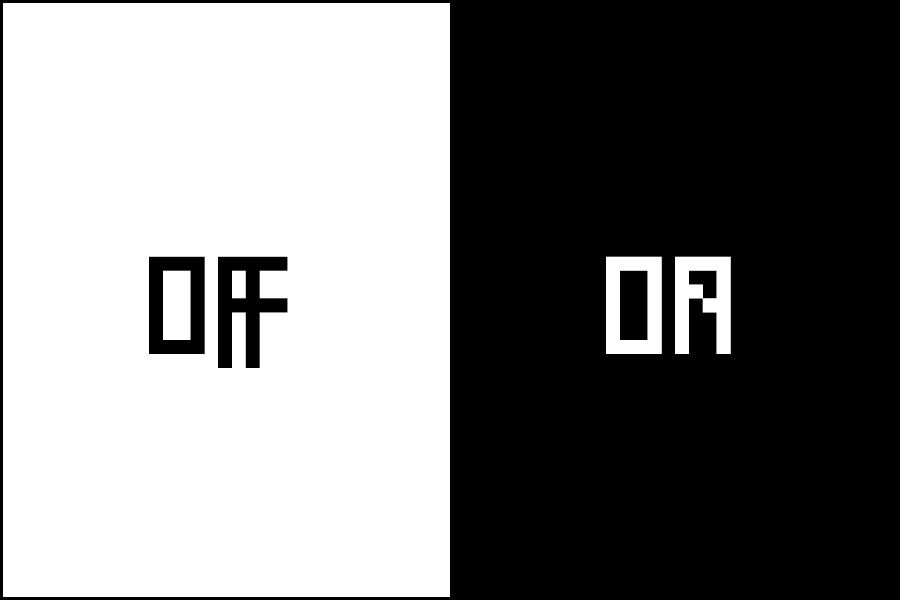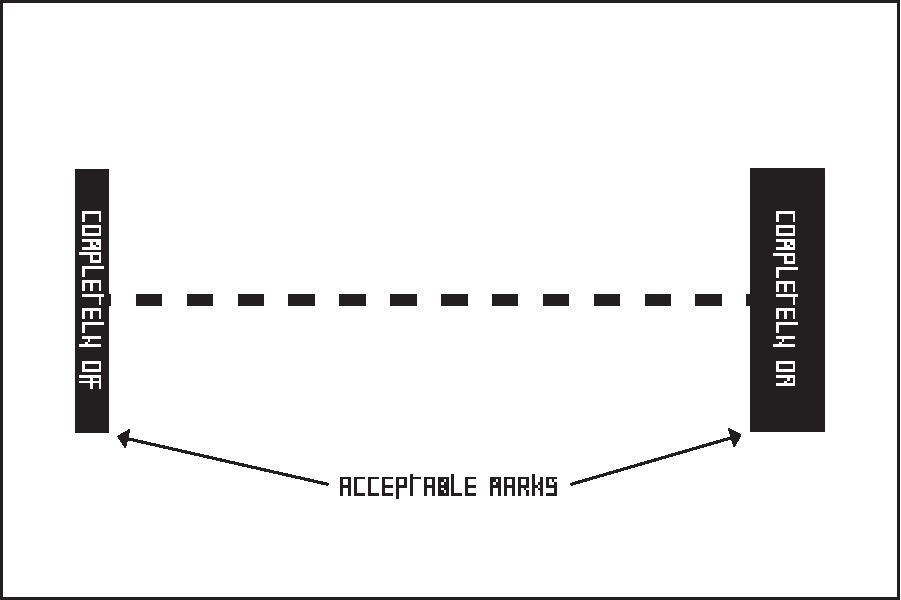
The first post in this series ended with a description of two ideas: dislegibility and emergent form. How can these concepts be applied? How might one experiment with dislegible text and emergent form in letterpress and books—two related disciplines that seem to demand careful planning and “clean” execution?
I started the answer to the above questions in a series of posts on this blog a little bit more than a year ago. (It seems I’m still stuck in that rut.) Those posts considered the process of bookmaking through the lens of the “emergent,” looking at the whole process of making a book and how it might be injected with more flexibility, immediacy, directness, and improvisation. This series of posts will focus more on the process of letterpress printing.

The traditional logic of printing says that there are only two options for marks: on or off, black or white, dot or no dot. A mark must be evenly inked, texture-less, and the ink must not exceed the boundaries of the mark as defined by the matrix. In letterpress the impression should range from not visible to maybe just enough of a bite to activate the three-dimensionality of the page. The diagram [above] shows the “acceptable” marks of printing—the singular “off/no mark” and the slight range of “on/mark.” The range in “on” comes from variability in impression and inking, usually determined by a printer’s personal preference.

Any mark outside of that binary is considered unacceptable—unintentional, not fully there, not controllable. These are stray marks, uneven marks made from a damaged or improperly made matrix, underinked or overinked marks, marks made with too little or too much force, dirt, variable marks, blobs of ink, etc.—all of the marks that we would treasure and cultivate in drawing and painting.
Drawing/painting involves markmaking with a tool pressed into or brushed against a surface. Relief printing is the same thing—a tool (matrix) pressed into or brushed against a surface. Yet most relief printing methods never seem that direct—they either require special materials and tools (woodcut, linoleum, wood/resin engraving) or expensive and environmentally questionable chemical processes (photopolymer). Relief collagraph, however, can be very direct, but it requires a reframing of approach, away from “imitating” linoleum or woodcut and toward a kind of direct markmaking.
Collagraph is a well-known technique and is usually taught as part of introductory letterpress courses. It has an immediacy and fidelity that is very exciting—you can stick a leaf or other flat object to a block, print it, and get a decent image of that object. Unfortunately it usually stops there. Those flat objects are hard to push beyond that initial single-color print. Linoleum, photopolymer, wood and metal type, and to some extent woodcut are all made to be “neutral” printing surfaces—flat and smooth. Trying to get collagraph to be flat and smooth begs the question: why use collagraph at all? In collagraph the material that makes the plate is not neutral—the material is exactly the point. That embrace of material and its many, varied effects and marks is what moves collagraph closer to the direct markmaking of drawing/painting. It makes all of those “unacceptable” (or abject?) marks readily available. Relief collagraph printed with letterpress equipment can be a method of painting or drawing in multiple, with control as good as—if not better than, but also different from—the hand. That control can also take advantage of the wild materiality that collagraph has to offer and use those “unacceptable” marks— consciously or unconsciously, carefully or recklessly. Collagraph and an embrace of all kinds of possible marks also opens the door to experimental printing without the use of a press. Collagraph and its roots (collage, drawing, bricolage) can even be a lens to reconsider what a press and movable type can be.
Aaron Cohick (he/him) is the Printer of The Press at Colorado College and the proprietor of the NewLights Press. He lives and works in Colorado Springs, CO.

